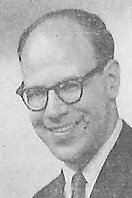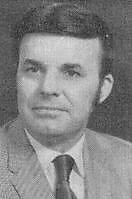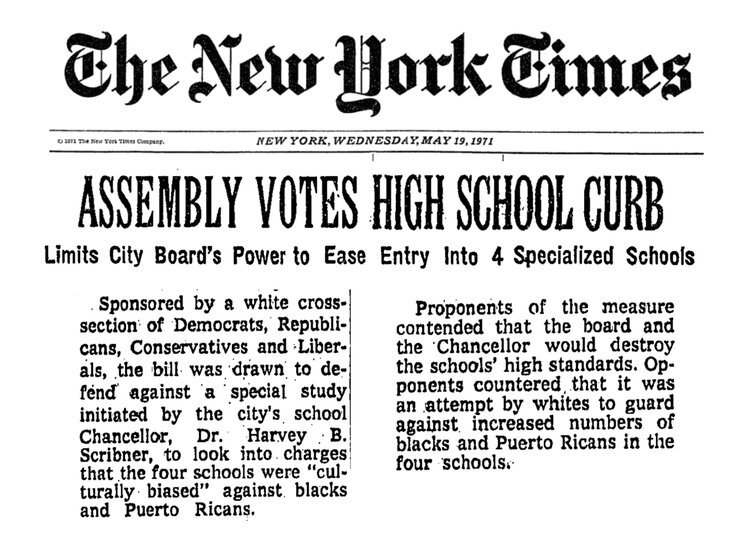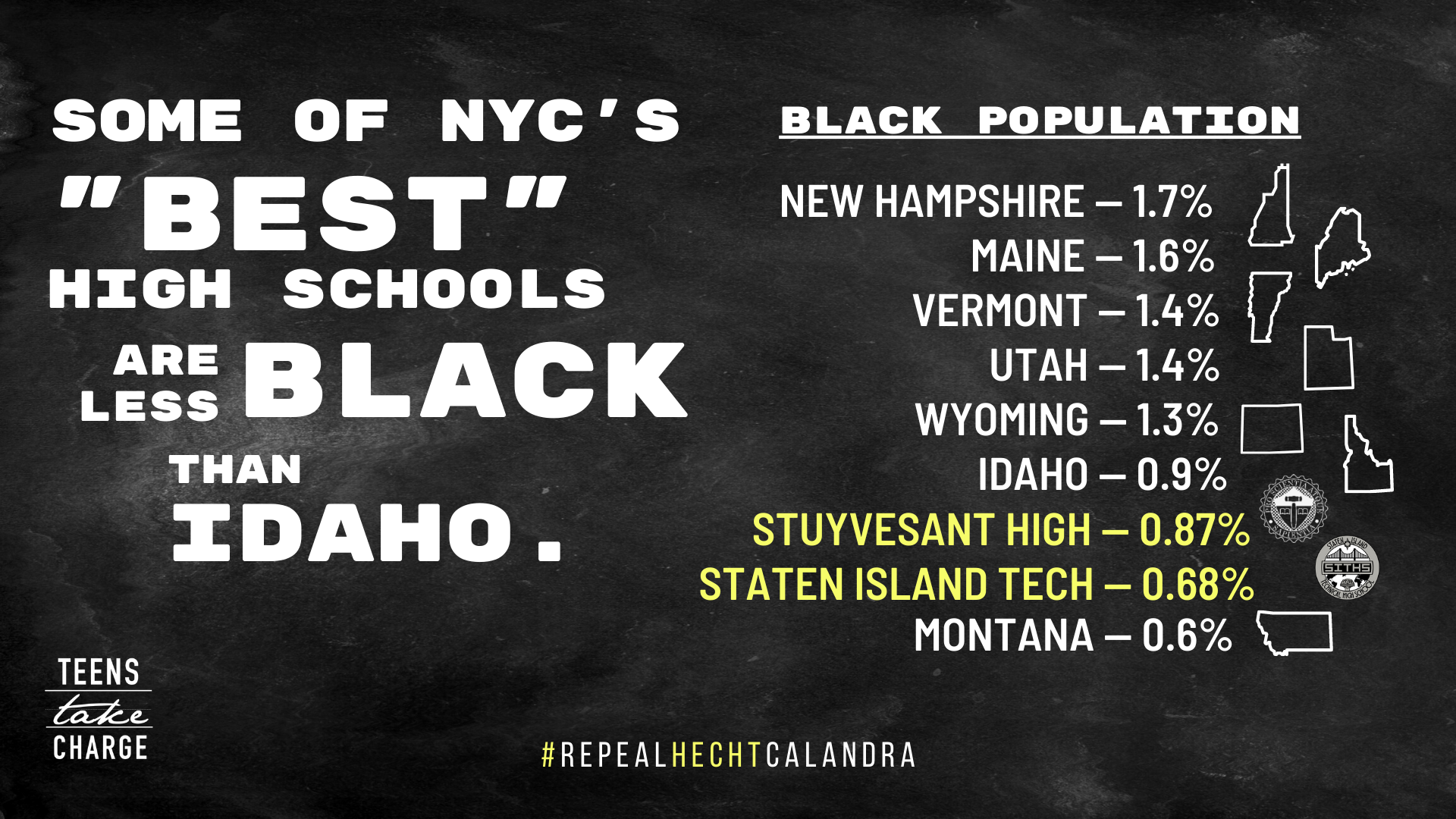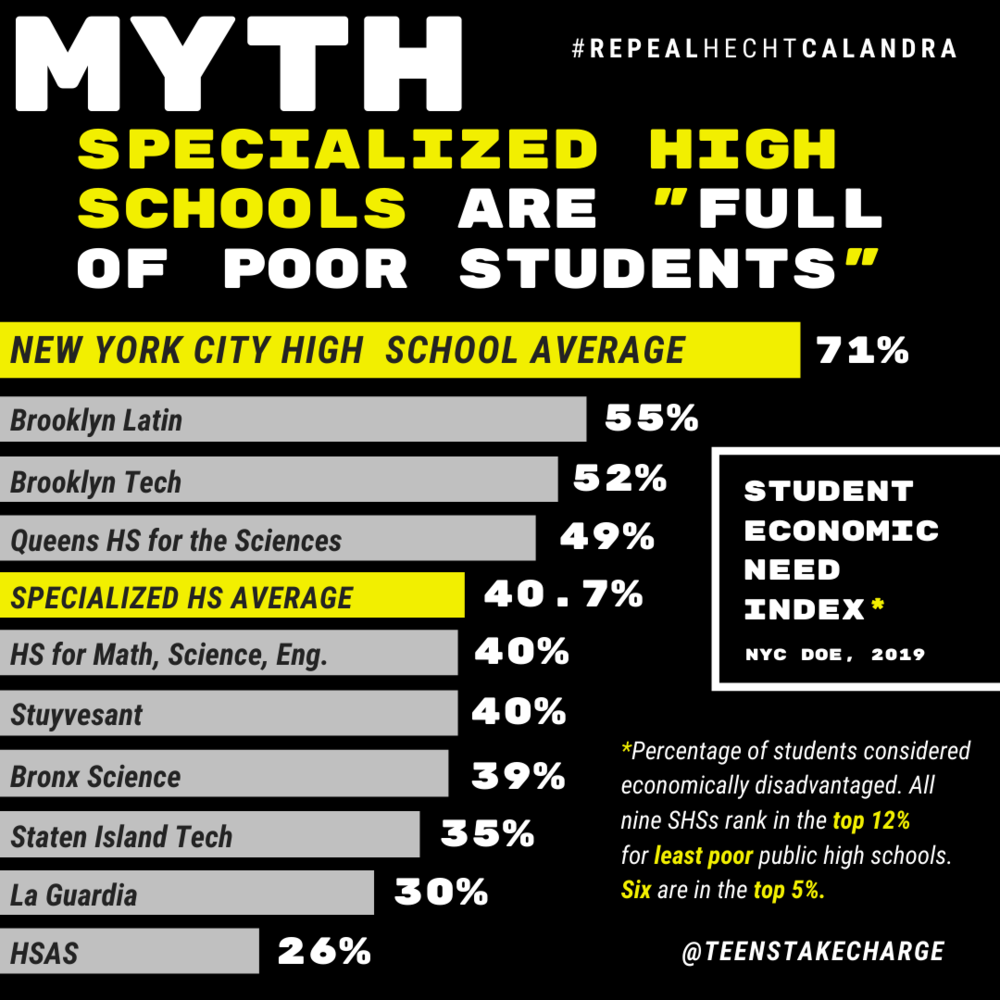Hecht-Calandra
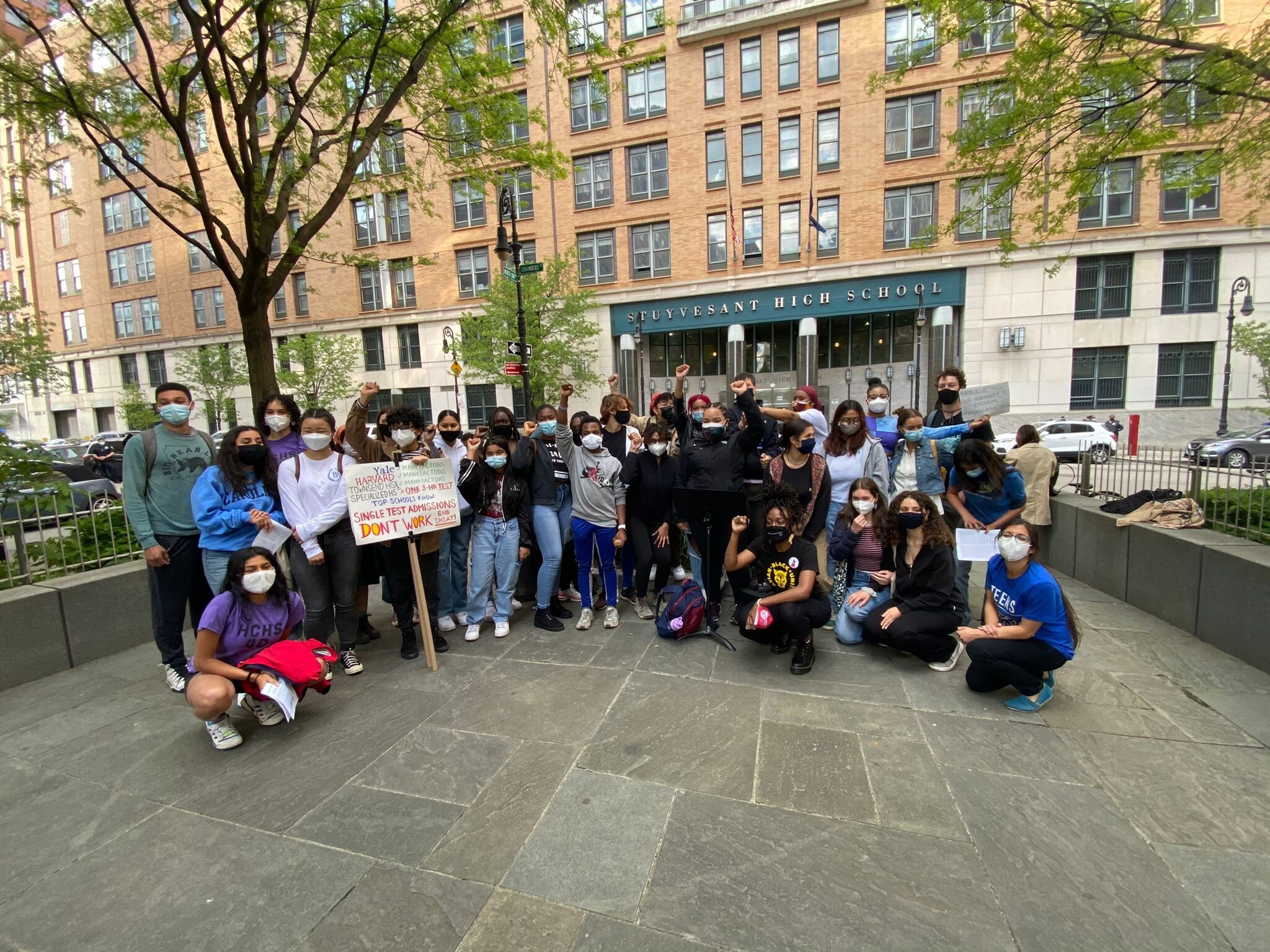
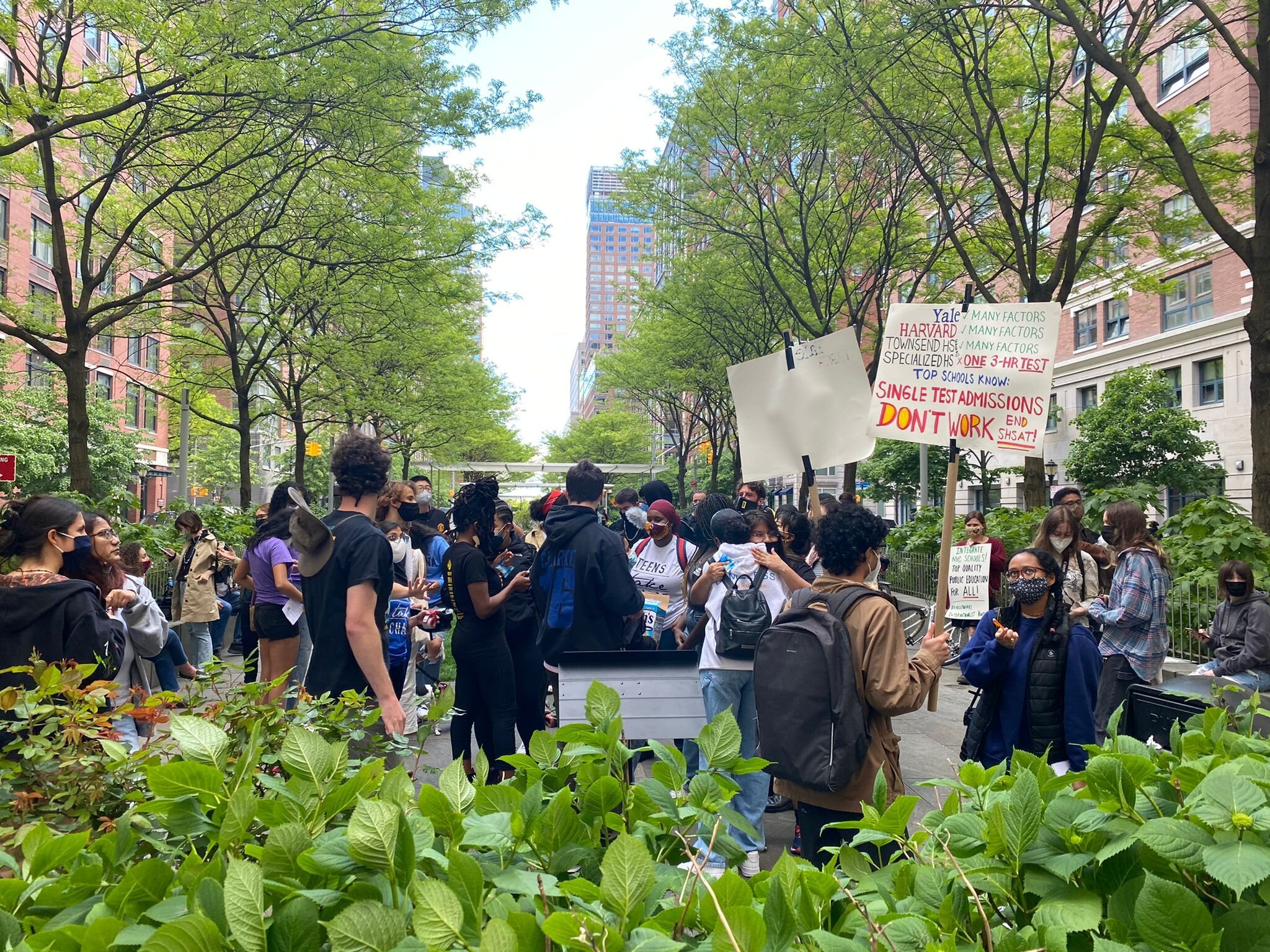
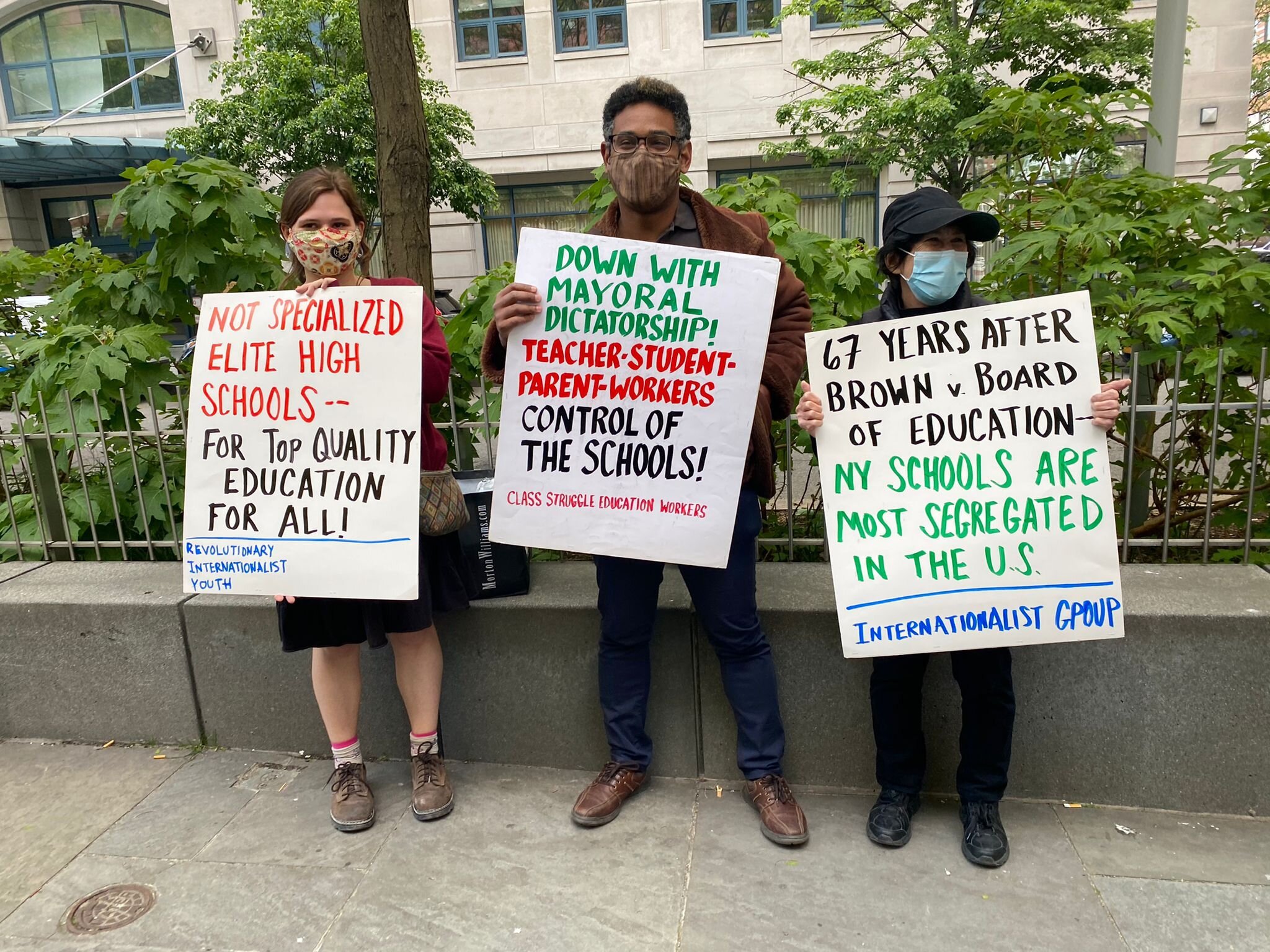
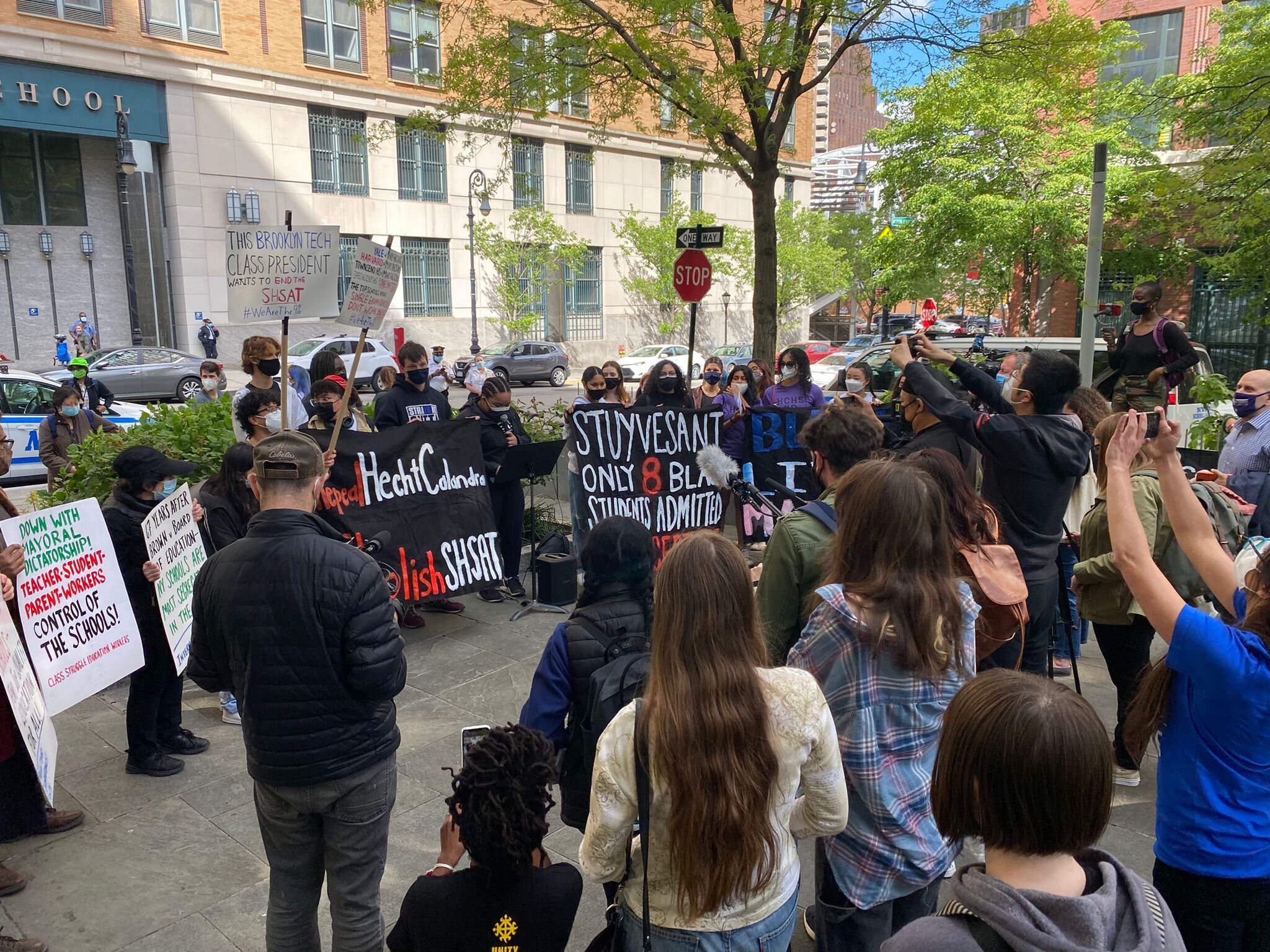
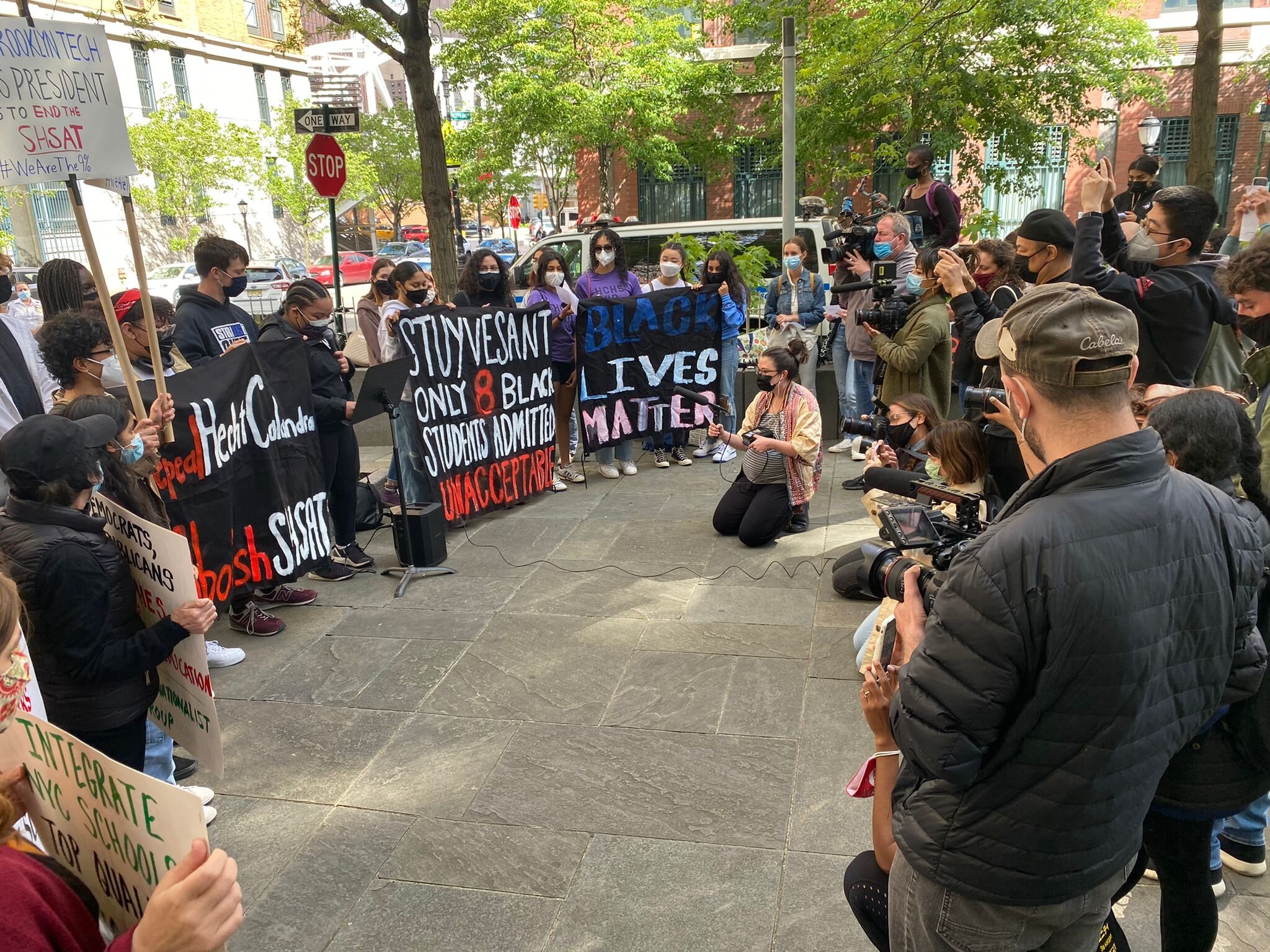
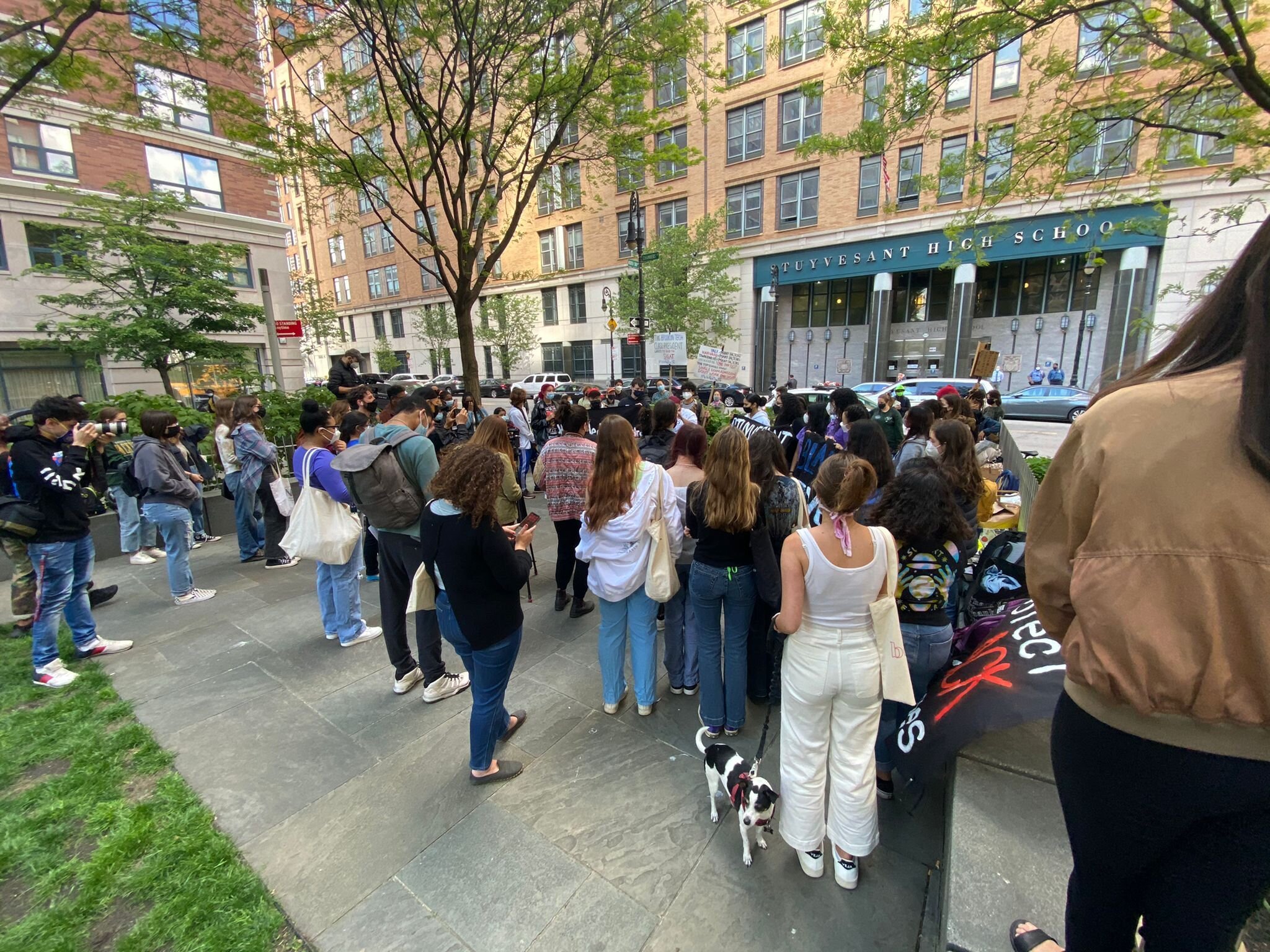
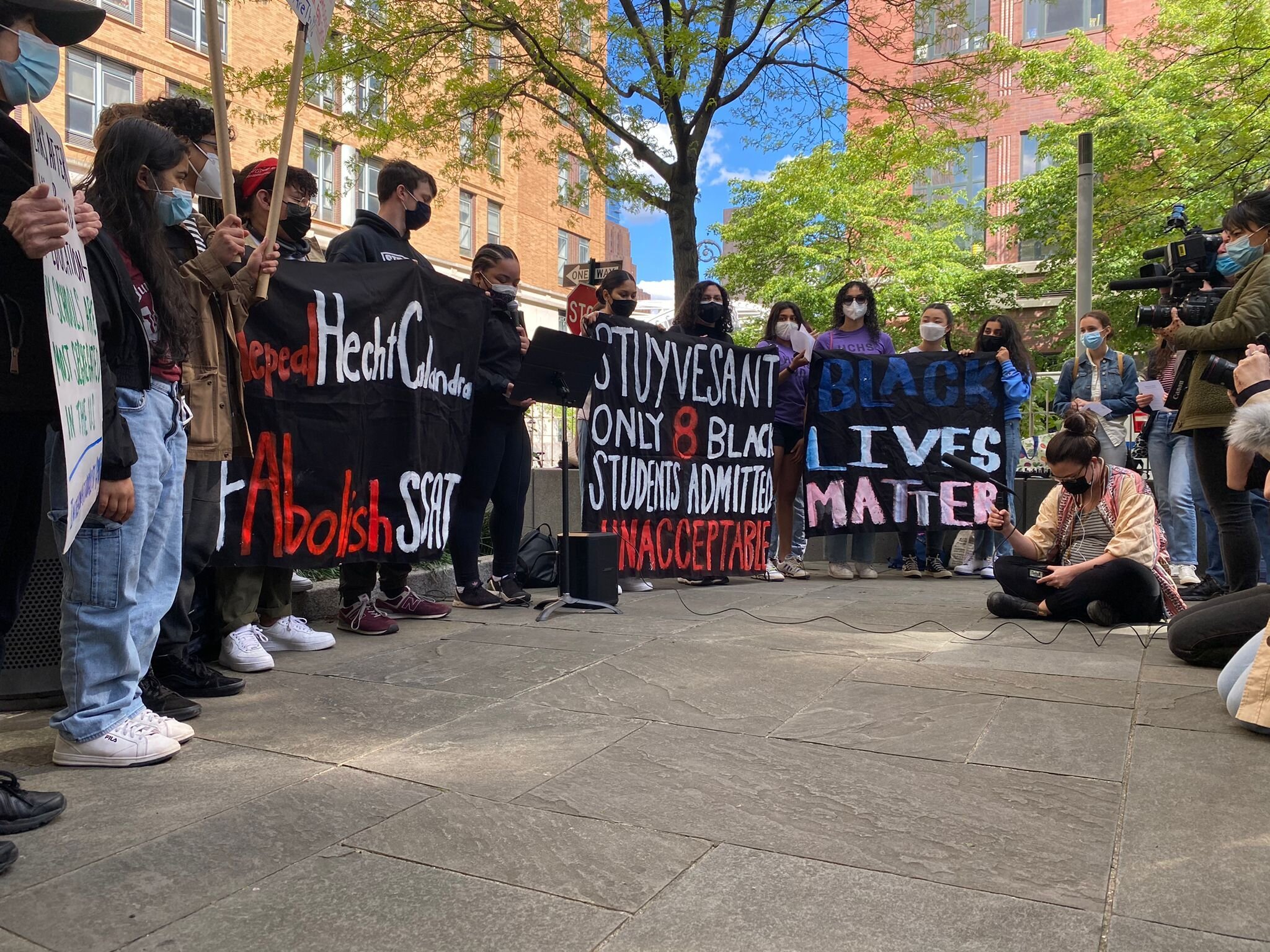
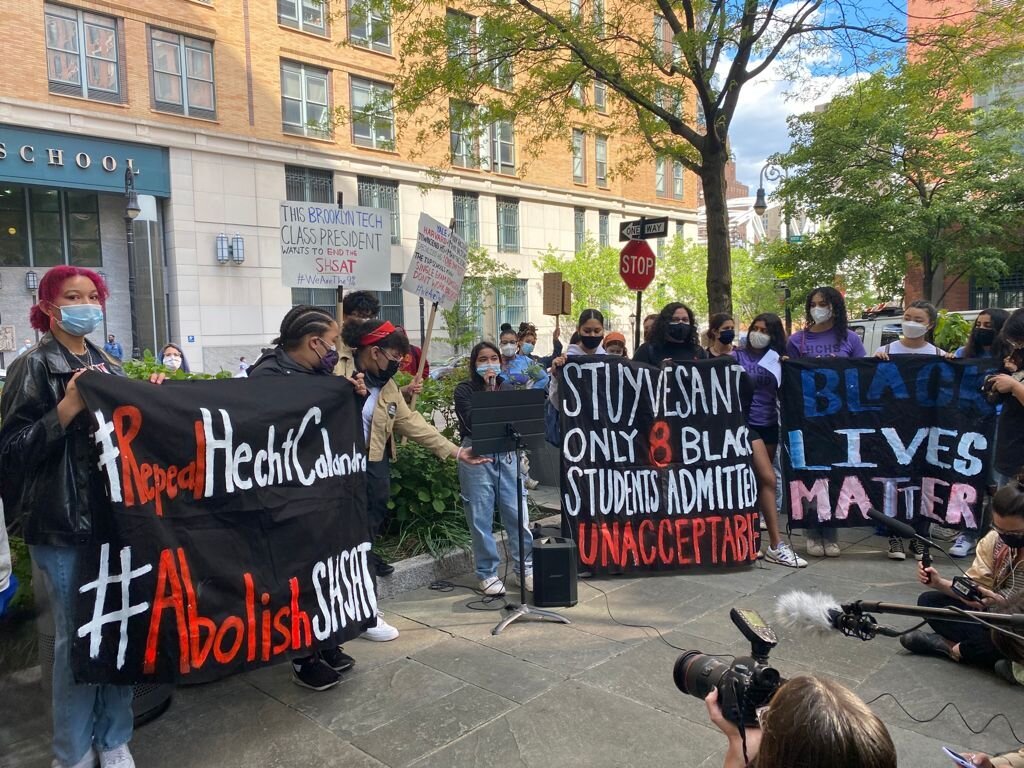
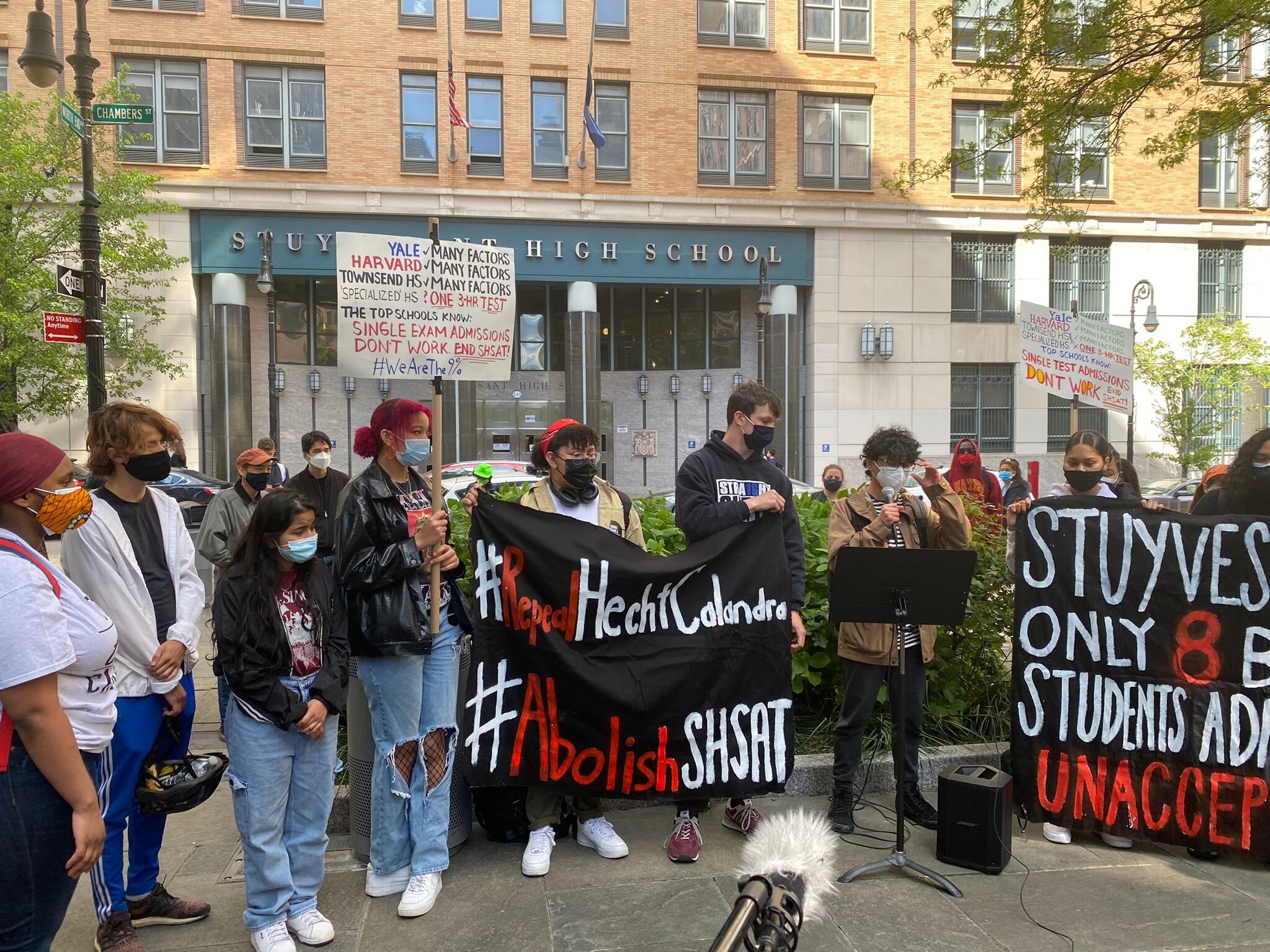
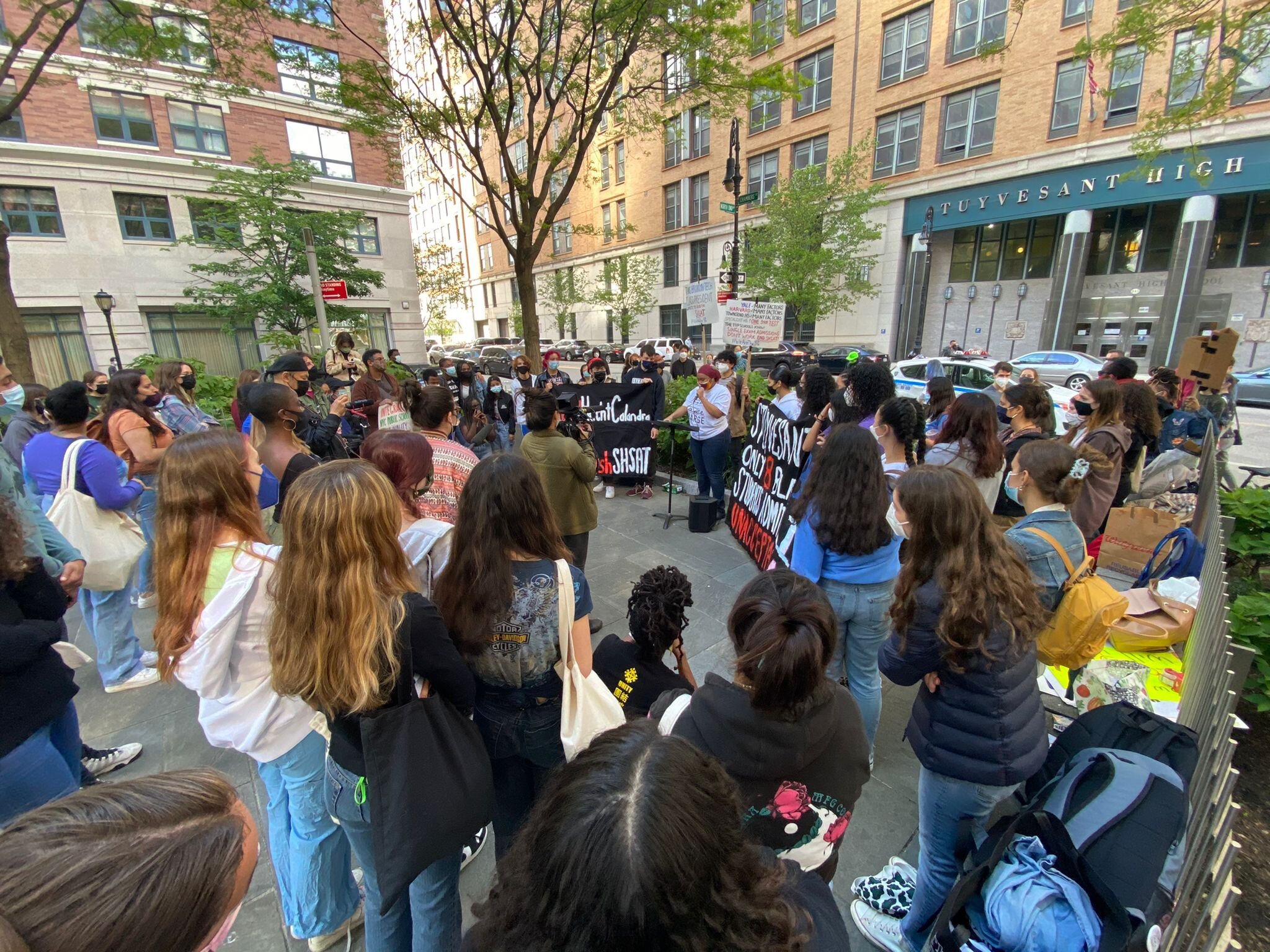
Anti-Racist Anti-SHSAT Rally at Stuyvesant High School — May 12, 2021.
Photos by Yuli Hsu
What is Hecht-Calandra?
Named for its co-sponsors, Burton Hecht and John Calandra, the 1971 Hecht-Calandra Act requires NYC to admit students to its “specialized high schools” based solely on a Specialized High School Admissions Test (SHSAT) score.
This single-test system produces extreme segregation in the nine specialized high schools. For years, bills to amend Hecht-Calandra have died in the legislature. These bills have never gotten enough support, partly because they have proposed very specific alternatives to the current process. So, while most legislators can agree that a single test is a bad idea, getting them to agree on the same alternative has proven difficult.
The Senate and the Assembly need to take action. Give the decision over local school admissions back to New York City, where it belongs. Representatives from Buffalo and Syracuse have no business telling New York City how to admit students to its public schools.
RACIST IMPACT
CITYWIDE VS. SPECIALIZED HIGH SCHOOLS
HISTORY OF HECHT-CALANDRA
In 1971, the New York State legislature passed the Hecht-Calandra Act, a racist piece of legislation that has produced racial inequality for nearly five decades. The Act was intentionally designed to thwart the city’s efforts to integrate the four “Specialized High Schools.”
Their rationale? Maintaining “the schools’ high standards”: a phrase which suggests that the presence of Black and Brown students in these schools would somehow decrease their quality. This coded racism has gone unchecked for almost 50 years. Black and Latinx students are drastically underrepresented in the city’s now-nine specialized high schools.
EVERY YEAR, state legislators express outrage at the lack of diversity in specialized high schools. But every proposal to increase diversity has died in Albany.
Why Now?
If you’re out there marching and shouting Black Lives Matter but oppose removing admission tests and screens that keep most Black children out of the best public schools, then your outrage is performative.”
Nicole Hannah-Jones
As thousands of people protest for #BlackLivesMatter, seeking justice for George Floyd, Breonna Taylor, Tony McDade, and all Black Americans, we want to make sure that Black lives matter, not just in our streets but in our schools, too.
Black and Brown students are hurt every single day by school segregation and a slew of other racist education policies. There has been recent momentum in the state legislature around police violence and misconduct, including the repeal of 50-A, a law designed to keep police misconduct records sealed from public view.
Removing this admissions exam is another important step toward racial justice that we must take now.
This is where the link will jump to
FAQs
If Asian students are able to gain access to the specialized high schools, then Hecht-Calandra can’t be racist, right?
No! Hecht-Calandra is definitely still a racist law! To begin with, the Hecht-Calandra act was designed with the specific intent of excluding Black and Latinx students in particular; the initial bill was created to hinder the amount of students that were to be admitted into SHS through the Discovery Program, the main way that Black and Latinx students were able to get into these schools at the time. The sponsors of the bill were responding to Mayor Lindsay’s efforts to study the lack of diversity in the SHS. Now, let’s break down what putting Asian students in this position actually does: perpetuate the model minority myth and continue to justify a system that hurts all students of color, including Asian students. Asian students are not a monolith by any means and 82% of APA public high school students do not attend a specialized high school. By perpetuating this myth, you continue to stigmatize Asian students by placing them at a higher standard, and are recognizing that, indeed, specialized high schools do discriminate against Black and Latinx students. We also believe that all students, including Asian students, are harmed by the SHSAT and the highly segregated education provided by the SHSs. No student or family should experience the financial burden associated with the test preparation required to do well on the exam or the stress associated with high stakes testing. And, we know that an integrated education benefits all students. The existence of such highly segregated schools in our public system is harmful to all students, including the ones who experience material benefits from it.
What’s going to replace the SHSAT?
When the admissions policy for the Specialized High Schools comes back into the control of the city, there will need to be engagement around what the replacement of the SHSAT is. Right now, we at Teens Take Charge are not advocating for a particular plan. We’re sure that the SHSAT is not the answer, but what the future of these schools looks like is not the focus of our current advocacy. What we can confidently say is that student leaders should be at the center of the process for the SHSAT replacement.
What about the rest of NYC’s schools — aren’t they just as segregated? This is a small issue.
You’re right! The specialized high schools are only a piece of the problem. NYC has over 500 public high schools and they are also incredibly segregated. We at Teens Take Charge have been working hard to reform admissions to these schools too. If you’re interested in learning about our advocacy on the bulk of NYC’s public high schools, please check out our Education Unscreened campaign. While we care about integrating all of New York City’s public high schools, it’s also a misconception to think of the Specialized High Schools as being a small problem. Around one third of NYC students take the SHSAT. That’s almost 30,000 students that experience the effects of Hecht-Calandra each year.
Won’t the quality of specialized high schools decline without the test based admissions?
No. There’s a lot to unpack in this question, beginning with the characterization of Specialized High Schools as being the model for high quality education. Beyond being highly segregated, specialized high schools are problematic in several ways including the lack of culturally responsive curriculum, the often hostile and isolating environment experienced by Black and Latinx students, and the fact that specialized high school alums do not necessarily have better life and career outcomes than their peers at other high schools. What the specialized high schools are is highly resourced and highly reputable, which allows their students to have outsize access to opportunities within and without the school and classroom and much more access to selective colleges and universities. While these are conditions that we believe all students should have access to, there is also a lot that needs to be challenged about what we consider a good school to be. We ought to think about high quality education in terms of the richness of the learning and the life outcomes. What we know is that an integrated education benefits all students socially, emotionally, cognitively, and academically in the short term and in the long term. It’s also important to note here that the test itself is poorly designed and has relatively little predictive validity for performance at the SHS. That’s all to say that it’s a myth that the SHSAT does a successful job of capturing the students who will perform best at the SHS. While we reject the overall premise of ‘high achievers’ versus ‘low achievers’, should one rely on that model, the SHSAT fails to accurately capture the ‘highest achieving’ SHS students anyways. So, no, the quality of education at specialized high schools will not decrease by integrating these schools.
How can an objective test be biased? Admissions to the specialized high schools are fair.
Since the SHSAT does not test students on middle school knowledge, students have to complete SHSAT prep on their own time, if it’s not offered in their schools. This can cost thousands of dollars and takes hours to prep for. In addition to this, many schools throughout NYC are at different educational levels, with some being ahead of the average curriculum while others are behind. Therefore, students from institutions such as private schools actually have a higher chance of passing the SHSAT without special preparation, while students from public schools that are behind the set curriculum have to work harder to meet the requirements of the standardized test. The SHSAT measures the socioeconomic statuses, middle school contexts, and time constraints of students, rather than their knowledge from middle school.
Won’t improving K-8 education and increasing access to test prep and information about the test solve the lack of diversity in these schools while still preserving their high standards?
First, improving K-8 education in all schools will leave students in the same position they are currently in, since the SHSAT would still test students beyond middle school knowledge. The SHSAT will always be attached to its racist history, designed to exclude Black and Latinx students, and, no matter marginal improvements in access, it will always have that impact. Second, this also ties into our Education Unscreened campaign, which calls for the elimination of admissions screens in all New York City public high schools. You can read more about it here. The SHSAT is only one form of admissions screens in the New York City public school system. By eliminating ALL admissions screens and integrating our schools, we make sure that all students have an equitable access to a rigorous education, leading to the fact that the label of “specialized high schools” won’t be needed anymore. All students are specialized and hardworking, so all students should be given the same opportunities.
As a reminder, repealing Hecht-Calandra will not automatically eliminate the SHSAT, although that is what we are working towards at Teens Take Charge. Repealing Hecht-Calandra would simply mean that the power of the SHSAT will be moved from state legislatures to city officials.
What about the students that work hard to get into these schools?
All students that take the SHSAT are motivated by the hope of getting into one of the nine specialized high schools to work hard to pass with a high score. However, not all students have the same resources to produce the same results. While some students receive months or even year long classes to prepare for the SHSAT, some only have their own notes to rely on. Once the bill is passed all students will still have the chance to fight for a seat in one of the SHS. There will simply be a much more leveled plane field.
Doesn’t the test measure knowledge from middle school content?
It does not! Students taking the SHSAT have to know most of the math curriculum from 8th grade and higher to pass even though the test is administered in the Fall. Additionally, because every middle school has a different curriculum, not all students have the same middle school knowledge prior to the exam. This is why many students who wish to take the SHSAT enroll in prep classes.
Even if the SHSAT does require some knowledge beyond middle school education, all students have the same amount of time to prepare so what’s the issue?
The most common way for students to be given information about the SHSAT is through their schools. Since many do not have a stable support system for their students, there have been many cases where students were not informed about the standardized test’s existence until as little as a week before they were assigned to take it. Therefore, students that take the SHSAT unfortunately have varying amounts of time to prepare, which can end up affecting one’s performance.
Additionally, every middle school has a different curriculum, and so different students learn different materials, which will affect how much money and time they will have to spend to prepare for the SHSAT.

